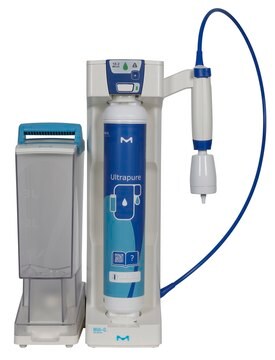11699695001
Roche
ATP Bioluminescence Assay Kit CLS II
sufficient for 800 assays (tubes), kit of 1 (2 components), suitable for detection
Synonyme(s) :
bioluminescence assay
About This Item
Produits recommandés
Pureté
>98%
Niveau de qualité
Utilisation
sufficient for 800 assays (tubes)
Conditionnement
kit of 1 (2 components)
Fabricant/nom de marque
Roche
Paramètres
15-25 °C optimum reaction temp.
Application(s)
detection
Conditions d'expédition
dry ice
Température de stockage
−20°C
Description générale
Spécificité
The sensitivity of the kit is reduced by a factor of 10, compared to the ATP Bioluminescence Assay Kit HS II, which is recommended for determinations that are in the high-sensitivity range. The ATP Bioluminescence Assay Kit HS II also contains an efficient cell lysis reagent, and can be used for the detection of ATP in microorganisms or animal cells.
Application
For more highly sensitive ATP determinations, use the ATP Bioluminescence Assay Kit HS II.
Conditionnement
Notes préparatoires
Working solution: Preparation of working solutions
Luciferase Reagent
Dissolve the whole content of one bottle by carefully adding 10 ml of double-dist. water. Incubate for five minutes at 0 to 4 °C without stirring or shaking. Mix for a homogeneous solution by carefully rotating the bottle. Do not shake. The reagent is stable for one day at 15 to 25 °C or for one week when stored at 0 to 4 °C. However, set up a standard curve each day, because a slightly loss of light activity occurs during this time (approx. 20% after 5 days).
ATP Standard
Each bottle contains approx. 10 mg ATP (> 98% purity; Mr 605.2). The exact amount of ATP is determined individually for each lot as indicated on the label. Dissolve the content of one bottle by addition of the appropriate volume of double-dist. water to get a final concentration of 10 mg/ml or 16.5 mM, respectively (e.g., 960 μl to 9.60 mg ATP).
Reconstitution
Autres remarques
Composants de kit seuls
- Luciferase Reagent, lyophilized (8)
- ATP Standard, lyophilized (for calibration) (4)
Mention d'avertissement
Warning
Mentions de danger
Conseils de prudence
Classification des risques
STOT RE 2
Code de la classe de stockage
11 - Combustible Solids
Classe de danger pour l'eau (WGK)
WGK 2
Point d'éclair (°F)
does not flash
Point d'éclair (°C)
does not flash
Certificats d'analyse (COA)
Recherchez un Certificats d'analyse (COA) en saisissant le numéro de lot du produit. Les numéros de lot figurent sur l'étiquette du produit après les mots "Lot" ou "Batch".
Déjà en possession de ce produit ?
Retrouvez la documentation relative aux produits que vous avez récemment achetés dans la Bibliothèque de documents.
Notre équipe de scientifiques dispose d'une expérience dans tous les secteurs de la recherche, notamment en sciences de la vie, science des matériaux, synthèse chimique, chromatographie, analyse et dans de nombreux autres domaines..
Contacter notre Service technique








